6 Best Things To Do in Hiroshima in One Day
Japan, Asia / May 27, 2025 / 30 comments
When we finally decided to visit Japan, I knew we had to visit Hiroshima. The city is where the first of two atomic bombs was dropped on Japan on August 6, 1945. My birthday is also August 6th, so for most of my childhood, I had a weird connection with Hiroshima. I’m not a history buff, but I was paid a bit more attention whenever we learned about it. It was hard for me to comprehend waking up one day not knowing the atrocities that would happen (let alone on my birthday!). It was an awakening about how cruel we humans can be. I knew my time in Hiroshima would be powerful. What I didn’t expect was a thriving city, with a small trace of destruction, but a more positive outlook for the future of the world we live in. Here are the best things to do in Hiroshima in one day.
If you like this post, be sure to sign up for my e-mail list for travel inspiration (and get your FREE budget printable), or connect with me on Facebook, Instagram, Twitter, or Pinterest.
This post contains affiliate links. Meaning if you purchase something, I may make a small commission at no cost to you.
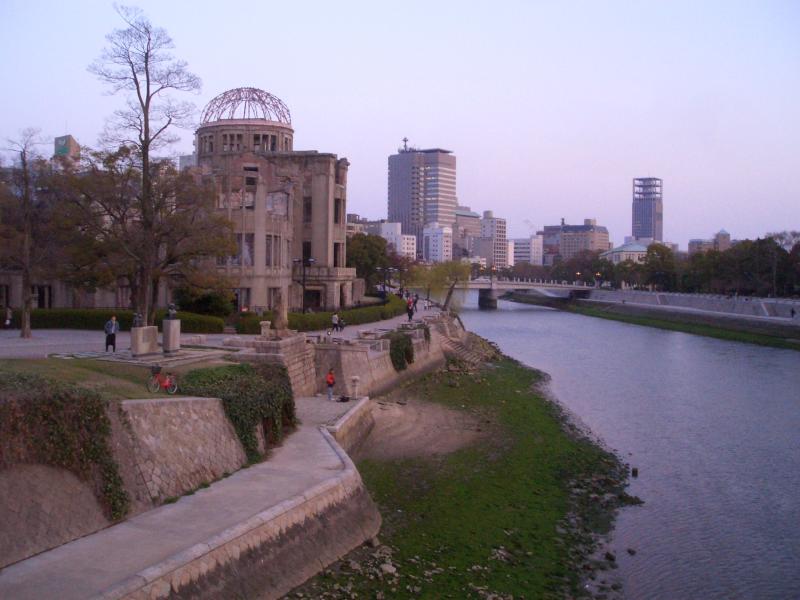
I recommend spending a night in the city to have a full day in Hiroshima, but many people do a day trip. Originally, we were planning to leave Hiroshima to visit Miyajima Island for the floating shrine, but we found out that the shrine was completely covered in scaffolding. Instead of traveling another 90 minutes to Miyajima (one way), we decided to stay in Hiroshima and have more time to explore. It honestly was a great decision as there are so many things to do in Hiroshima
One Day in Hiroshima
Getting from Kyoto to Hiroshima
A day trip is pretty straightforward from either Osaka or Kyoto. We knew we were going to Nara when we were in Osaka. When I was looking at a map, I didn’t think you could do Hiroshima in a short amount of time, but thanks to the Shinkansen, the journey only takes about 90 minutes. Trains run about every thirty minutes. There are a few different lines that get you there, some are non-stop, others are not. Most of the lines accept the JR Pass. Read my guide on how to use the JR Pass here.
We noticed that one option to take was a 10:30 am train that stops in Kobe at 11:40 am. When I realized I had the opportunity to actually have Kobe beef IN Kobe, I knew that this would be the train for us. (Yes, it was worth every penny and was a great experience! More on this soon!)
While you can do a day trip to Hiroshima and head back to Osaka or Kyoto, we decided to spend a night here so we wouldn’t be rushed.
Travel Tip: Make sure to get to the train station early. Shinkansens are rarely late – they average 6 seconds delay of their scheduled times!

A Short, Historical Background of Hiroshima
On August 6, 1945, the first of two atomic bombs over Japan were dropped about 600 meters in the air over Hiroshima. 90% of the city was destroyed, including 80,000 people who were killed, instantly. Over the next few days, more people died from radiation poisoning. Over the years, more people would die from medical complications.
After the bombing, the majority of Hiroshima was dismantled to make room for rebuilding. One building was difficult to dismantle, so the people debated about keeping it. Japan was torn about leaving it up as a way to remember what happened or if it would be too painful a memory. This building was the Hiroshima Prefectural Industrial Promotion Hall, or now known as the Atomic Bomb Dome. Now it is the symbol of the bombing and a glimpse into the past. If it wasn’t for the Dome, you probably wouldn’t even know that an atomic bomb was dropped seventy years ago. It’s one of the most photographed buildings in Japan!
Walking through Hiroshima
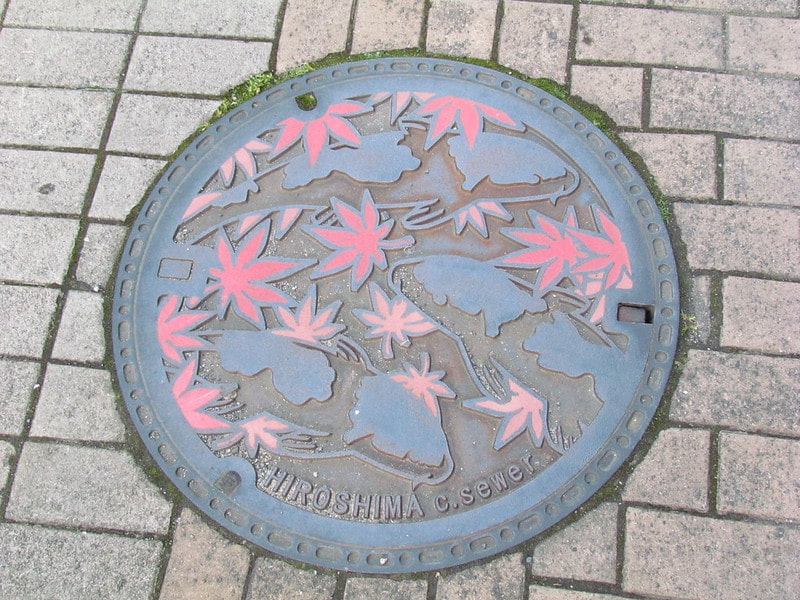
One of the things I loved about Hiroshima was the layout. It’s a pretty easy walk even for someone as directionally challenged like me. Following the path we took, it was a glimpse at history, reflecting back on what happened, then where we are today, and what we hope for in the future. I thought it was a beautiful journey through the city. It was a powerful and impactful.
Getting from the Train Station to the Hiroshima Sites
Start your one day in Hiroshima at the Atomic Bomb Dome and working your way down so you can see everything pretty much in order. Taxis are the easiest and most comfortable way, but also the most expensive. It’s about a 30-minute, 1.5 miles (2.6km) walk according to Google maps. A happy middle ground is a tram. Public transportation in Japan is so reliable and budget-friendly! Trams run frequently and drop you off right at the Atomic Bomb Dome. The twenty-minute ride costs less than 200 yen for adults and 90 yen for children. Genbaku Dome Mae, M10, is the stop for the Atomic Bomb Dome. If you’re not sure just ask the driver, they were nice enough to let us know how many stops.
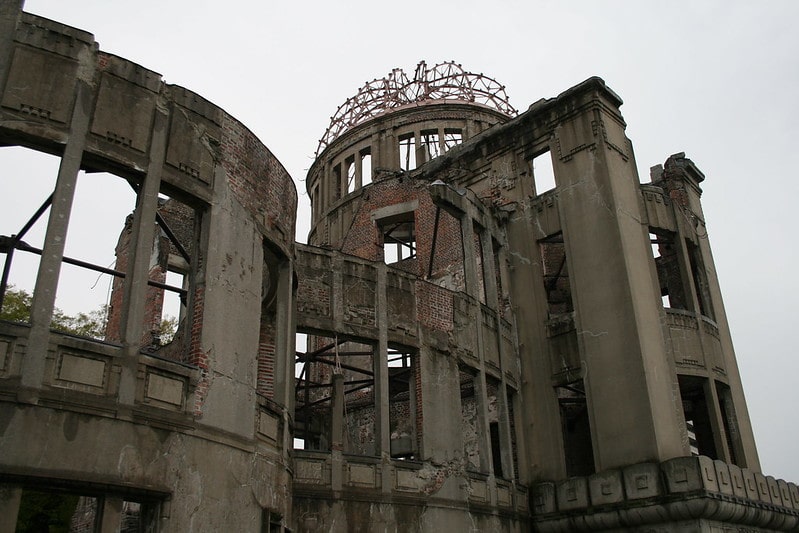

Atomic Bomb Dome
Honestly, the best thing to do in Hiroshima (and the most famous) is visiting the Atomic Bomb Dome. This relic from the bomb-dropping signifies the destruction that came in the immediate aftermath. Upon walking up to the Dome, the building stands out among the green grass and trees. It stopped me in my tracks and took my breath away. The Dome is fenced off to the public and the grass is pristine. From my perspective, it demonstrated that the world keeps moving forward even after the devastation. There are a few plaques around the dome that discuss the history and the hard decision of keeping the Dome standing as a memorial. The simplicity of the memorial doesn’t make it any less powerful.

Travel Tip: You can visit a small monument in town that marks the hypocenter of the bombing (just 1800 feet, or 600 meters, above). The monument is located on the street in front of the medical clinic Shimasjukhuset.
Children’s Peace Monument
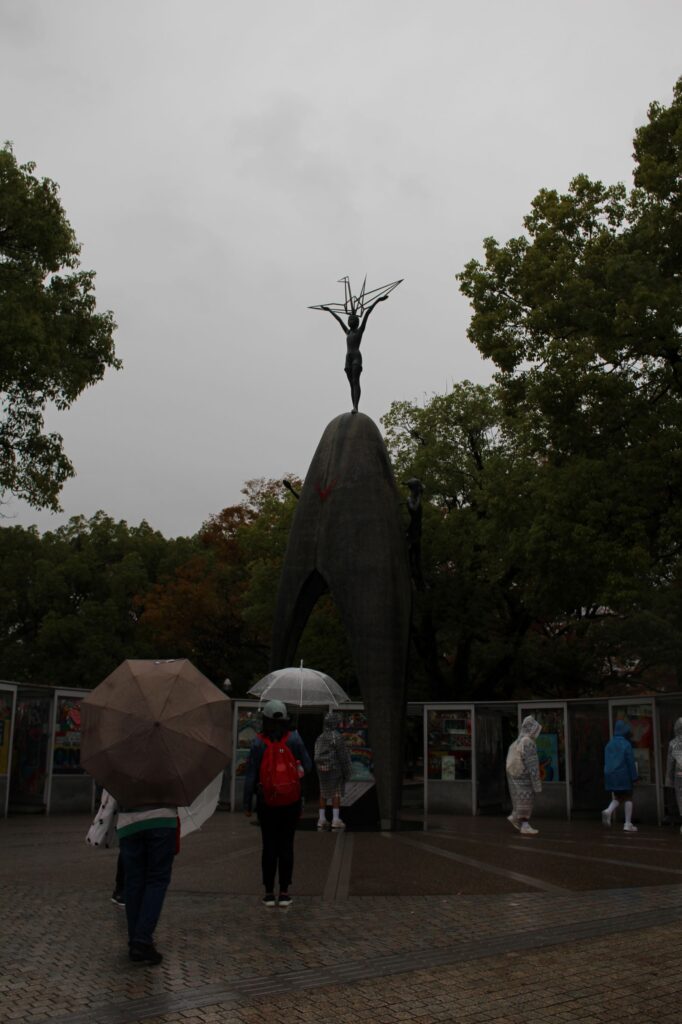
If you haven’t already cried today, then here is where you’ll start. (For me, I spent most of the day on and off crying.) The monument is in honor of all the children who lost their lives as a result of the atomic bombing. At the top of the monument is a figure of Sadako Sasaki holding a wire crane, a young girl who died of leukemia from radiation. Before she died, she had the vision to create a thousand cranes. According to Japanese tradition, if one creates a thousand cranes, they are granted one wish. Sadako’s wish? A world without nuclear weapons. She finished the 1000 cranes in August 1955, just a few months before her death in October 1955. Unfortunately, her wish did not come true. Now, there are cranes from around the world as signs of peace.
Walking through the thousands of cranes in all different styles, colors, patterns brought me to tears. To think of how far we have come since WWII, and yet how far we still have to go in terms of world peace. Children all over the world continue to make these cranes in the hope of a better future. Take time to read the stories and hopes of the children when you visit.
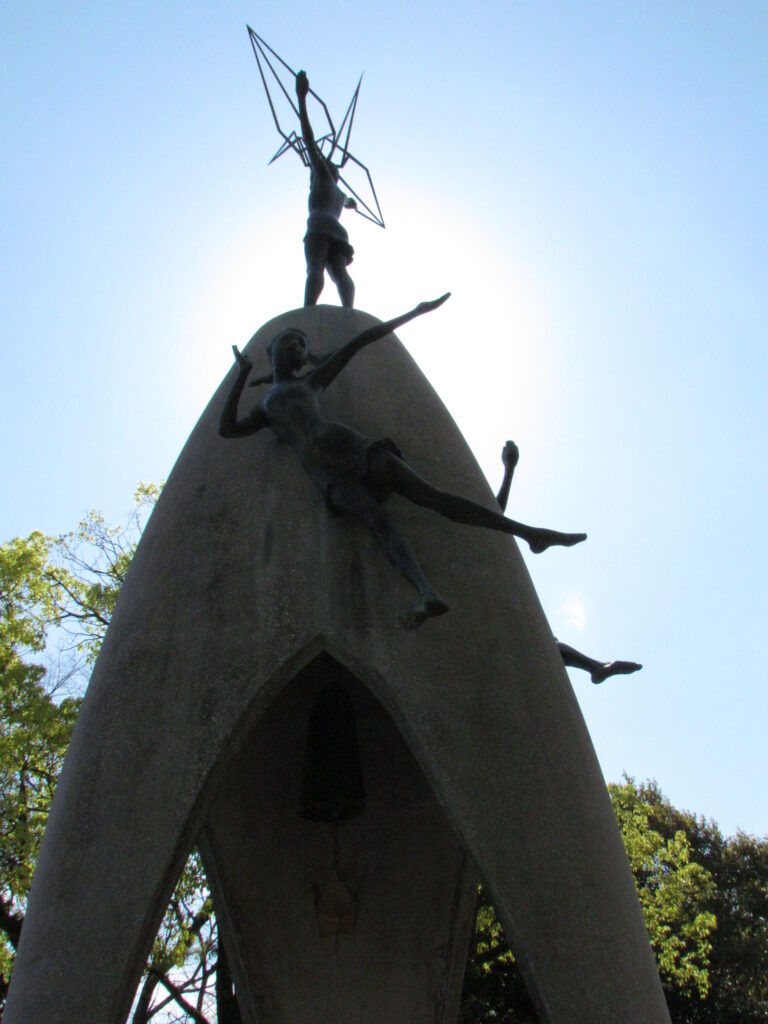
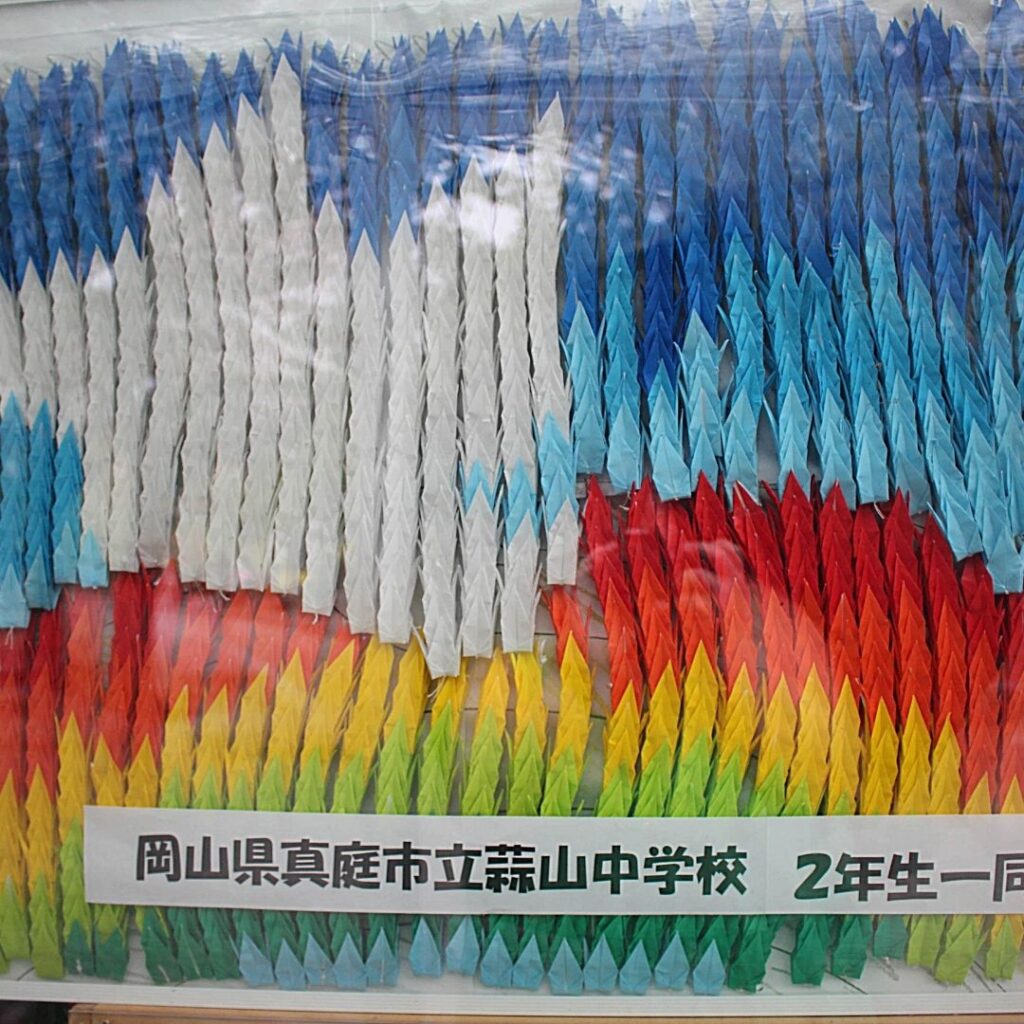

The Cenotaph
Continuing walking through the Peace Park brings you to the Cenotaph (and the eternal flame). Designed in 1952 to represent an ancient Japanese clay house to shelter the souls of the victims. This powerful monument is one of the best things to do in Hiroshima.
The inscription on the monument reads “Let all the souls here rest in peace, for we shall not repeat the evil.”
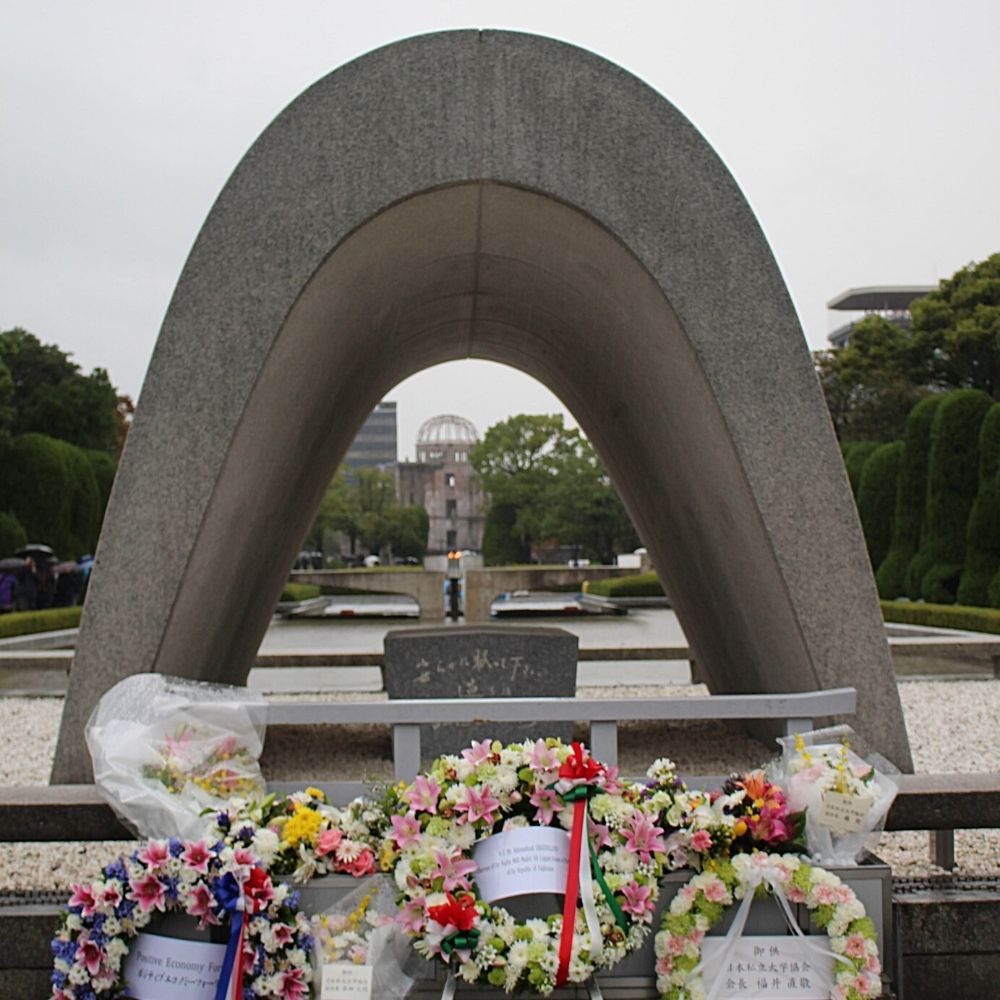
The stone chamber at the center is home to the registry of the deceased A-bomb victims. As of August 6, 2016 (51 years after the first bombing) there are over 100 volumes with 300,000+ names. “Many victims with their names unknown” pay honor to those victims we will never know.
If you look at the memorial straight on, you can see the Atomic Bomb Dome in the background. While everything was powerful in Hiroshima, this one actually made me cry. Seeing where the heartbreak started and where we are today was heartbreaking. Be sure to give yourself time to reflect here.
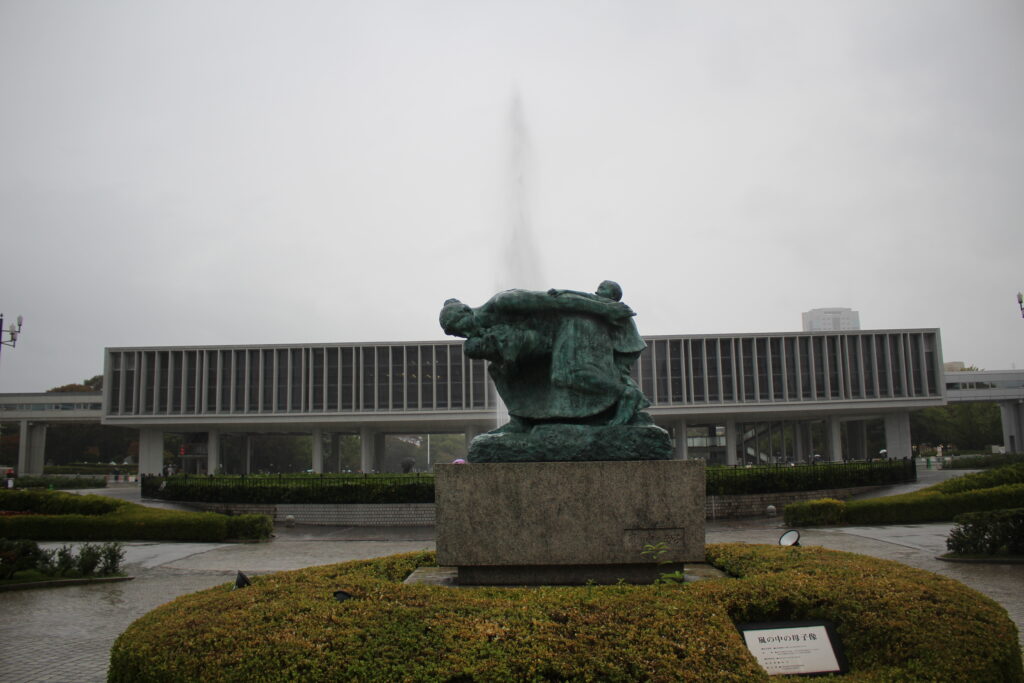

Hiroshima Peace Memorial Museum
The museum gives a powerful, fascinating, and heartbreaking look into the destruction of Hiroshima. Not only does the museum talk about the city and its people, but also on the aftermath of the bombing. There are statues of women and children with radiation poisoning – a graphic sight to see. Children born after the bombing often had birth defects as well.
The museum costs 50 JPY for adults. It’s open most days from 8:30 am- 6:00 pm, but the website has the most up to date information.
Hiroshima Gates of Peace
At the end of the peace park, across the street, are a series of gates. These gates symbolize the nine gates of hell plus the tenth “hell of Hiroshima”. The gates are covered with the word “peace” in 49 languages. It’s a symbol of hope for the future for world peace. A sense of somberness overcame me with the rain, since we still have so far to go in terms of world peace.
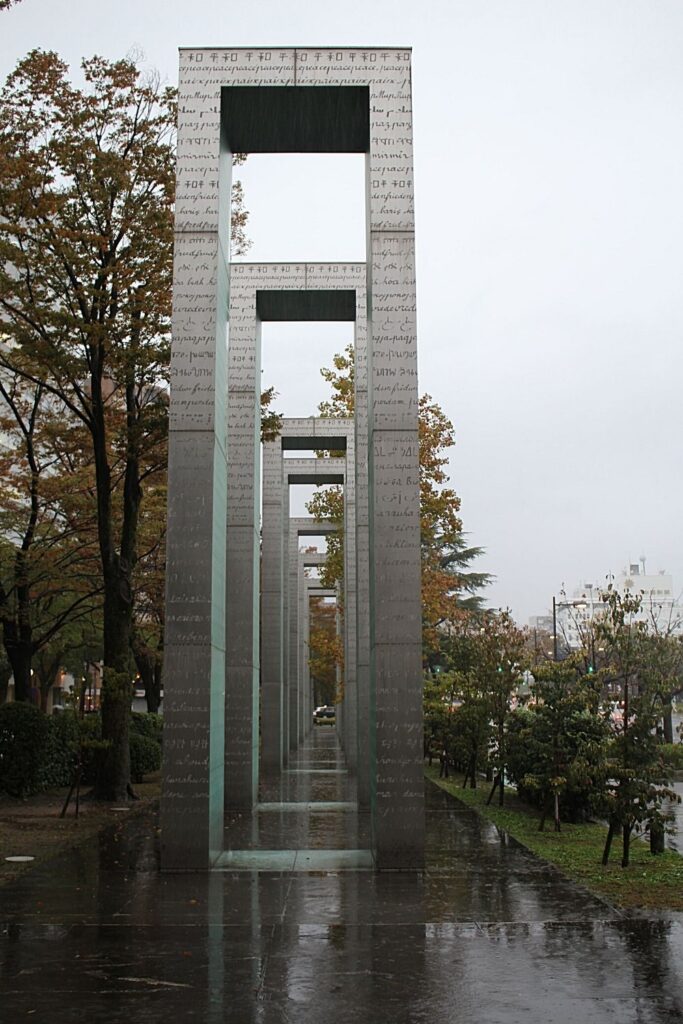

Hiroshima Castle
The original castle was destroyed during WWII, but the renovated structure is still impressive. Inside you can get a different look at Hiroshima’s history (before the bombing), try on samurai gear, or get a bird’s eye view of the city from the top. Even if you don’t have enough time to go inside, seeing the beauty from the outside is still one of the best things to do in Hiroshima. Its stunning brown and white exterior
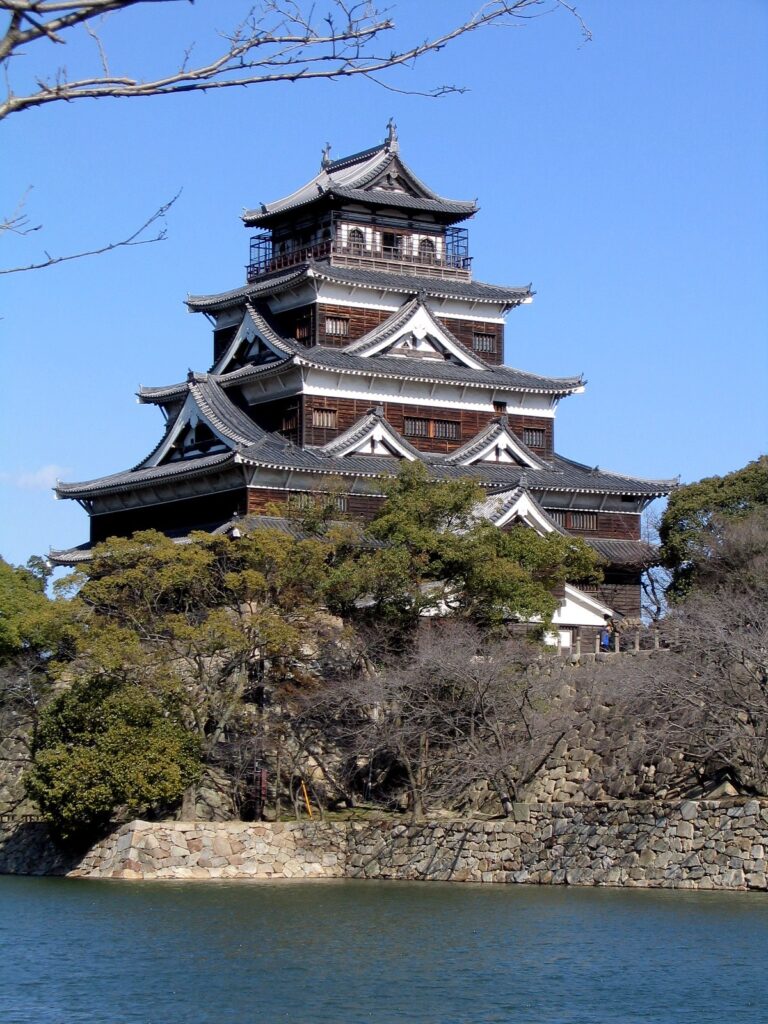
Shukkeien Garden
A day of remembering one of the darkest days of recent human history can be taxing. This landscape garden can help you recharge your batteries before continuing your travels.
Hiroshima was as powerful and heartbreaking as I thought it would be. While it’s not a feel-good destination, I will always recommend visiting at least for one night. I would have loved to explore Hiroshima more.
Booking.comPin “Best Things to do in Hiroshima in One Day” for Later!
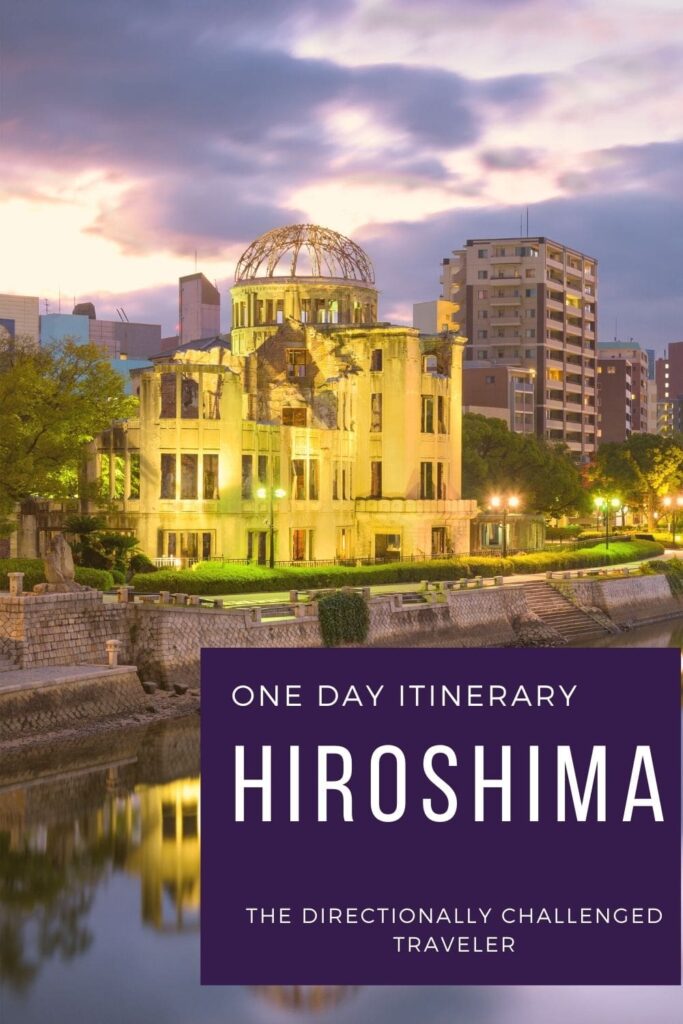

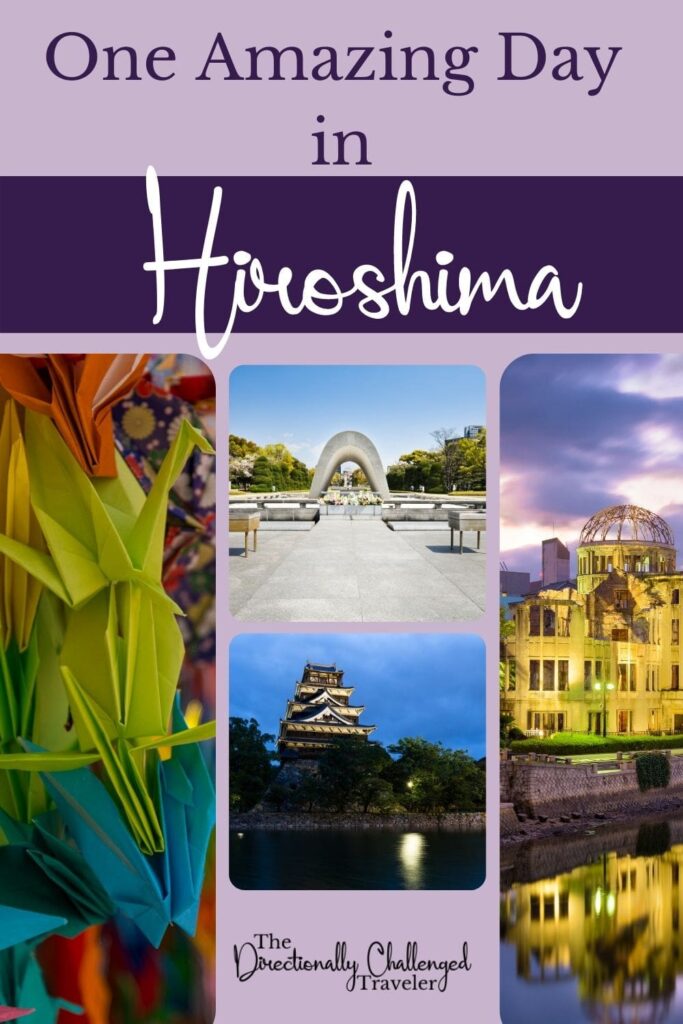
Is Hiroshima on your list? Let me know if you have any questions!
About the Author
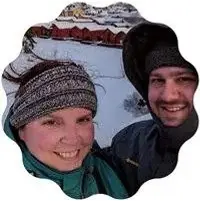

30 responses to “6 Best Things To Do in Hiroshima in One Day”

This is the first post on Hiroshima that I am reading. Thanks for sharing

Hiroshima is so on my list of travel destinations! I will keep your post for reference when I go:)

How fascinating. I love the Peace Memorial. The style reminds me of the holocaust memorial in downtown Boston. What an experience to visit Hiroshima!

You’ve included some beautiful sights around Hiroshima that I wouldn’t have known about. I wouldn’t have really considered it as a destination before. I can see it now as a symbol of peace and hope. But like you, I think I would spend my day crying on and off. I certainly appreciate the tips about the trains and how to get to each individual place. Japan has been on my bucket list but I’ve been intimidated by the language barrier and so thinking that of going on a tour instead. But your post is giving me confidence that I can do this on my own. I’ll look at your other Japan cities too.

I was also intimidated by the language barrier, but my husband really wanted to do our own trip – so I sucked it up and got planning. There was a lot of English – both in speaking and writing so that was nice! I definitely think it’s worth it either way 🙂 Or you could do a mixture- get to a city on your own and do some tours while there – they have some great multi-day or one-day tours!

Hiroshima is such a fun city to hang out in, I am glad to see that you loved it. Did you have a chance to eat some Hiroshima Okonomiyaki while you were there? That, and their oysters always make me happy.
If you ever go back, try to make it in the autumn as they have SUCH a good sake festival in mid- October.

I really miss Hiroshima and this post brought back such fond memories 🙂 Thanks for this!

Wow this is so cool. I have been wanting to go here for so long. Looks like there are so many neat places to visit! Thanks for sharing 😁

I love Japan but I have not made it to Hiroshima yet. I’ve bookmarked this for later when I can make it back to Japan.

This sounds like such an interesting and impressive trip! Japan has been at the top of my bucket list for years so I hope to make it out there myself too 🙂 Fascinating how you’ve always felt this connection with Hiroshima because of your birthday, I can only imagine what it must’ve felt like for you finally being there!

Hoping you get to go soon! It just always broke my heart that on a day I loved so many people lost their lives. So I spent most of my day there in tears – both sad, touching, and hopeful tears. It was the most somber day of our trip.

How amazing to read. This is the first time and first post I am reading on Hiroshima.

Great post about such a chilling but important part of world history. I think the Children’s Peace Monument would be hard for me too.

We debated wether to go down South on our Japan trip but decided to go North instead. I guess I have Hiroshima waiting for me next time I head to Japan. Thanks for the recommendations 🙂

There’s so much to see in Japan so that decision was probably difficult! Separating North & South is a great idea though!

Hiroshima was never on my list but thank you for writing this blog. It is a symbol of survival and a reminder for humanity. Like the details and the way you have presented them.

Thank you! I love how you put that “a symbol of survival and a reminder for humanity” <3 it was sombering to think about how far we have come, and yet not far enough.

Sounds like a very interesting trip! Like you, I would have to try some kobe beef in Kobe! I bet it was delicious!

I’ve never been to Hiroshima but it’s been on my bucket list for more than a decade! I really love this post. It gives fantastic travel tips and suggestions and I especially love that you included some information about the rich history of this amazing destination!

While one side may technically emerge as the victors, there are never any winners in war, only many, many losers. I would imagine that visiting Hiroshima and exploring a town where tens of thousands of innocent civilians were killed by the most terrifying weapon I can image would reinforce that belief in a very powerful way. Thanks for letting me travel there with you via your words and photos!

Absolutely. It was so powerful to remember the lives lost and how they’re moving forward, despite the heartbreak. It was incredible on so many levels.

Thank you for a stunning account of your experience here. I, like most, wish that we could live in a world without war and without the unnecessary suffering that it brings for so many innocent people. The story of the young lady with the cranes was so moving.

What a harrowing yet fascinating trip. I bet walking around the sites felt totally surreal. I didn’t really know much about the disaster before reading, and didn’t even know you could visit the sites, so this was a real eye opener for me.

I’ve never read a post about Hiroshima but I bet it’s a very interesting place to visit because it has so much history. 🙂

Thank you for such great advice if time is limited. I would also love to see the castle and gardens. Great post!

Wow! The Atomic Bomb Dome looks really powerful. Thanks for sharing.

Wow, this city is more beautiful that I had expected especially after the war damage. Hiroshima Castle looks quite impressive. Truly a great article. I think you got the perfect list of things to do – I would love to do all of them!

This is a place that stands as a monument of brutality and vistarvad. This is in my wish list for long time. I hope I’ll have a chance to go there. Tamil writer S. Ramakrishnan had published his travelogue in the name of ‘hiroshimavil mani olikkirathu’ (The bell rings in Hiroshima). Good to see your pictures and writing too.

It would be so fascinating to visit Hiroshima. I had never come across any post on Hiroshima yet. Thank you for sharing this.

Wow! Looks like a very interesting place to visit. Thanks for the info.









Leave a Reply